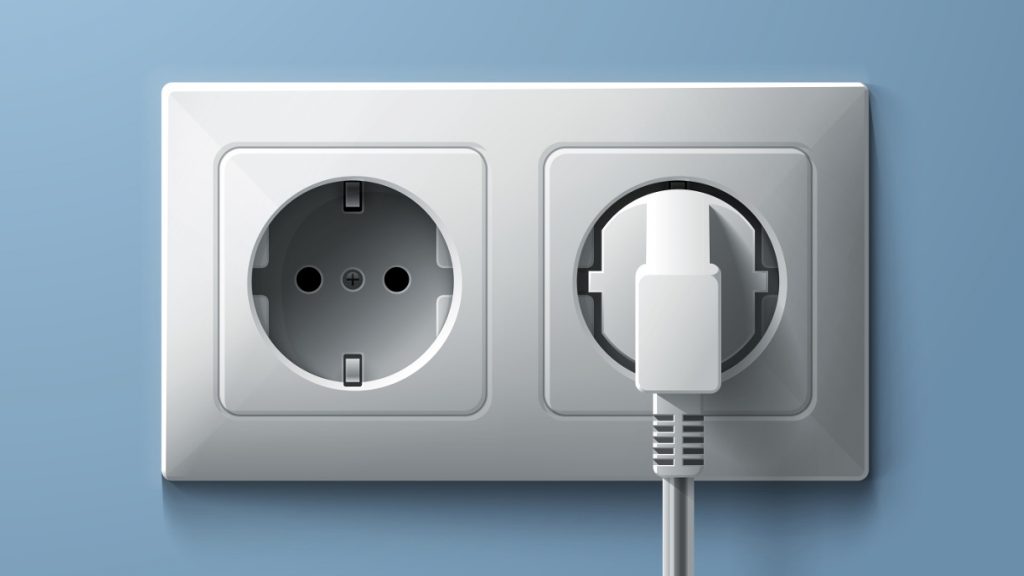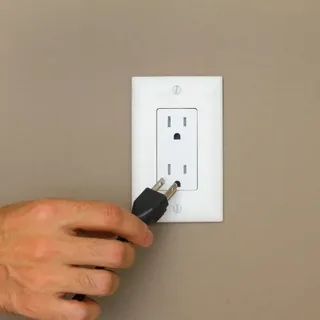What’s the Difference Between a 230V Outlet and a 220V Outlet?
When it comes to 230V and 220V outlets, the distinction is largely nominal. Both refer to the same general voltage range—typically between 220 and 240 volts—depending on your local power supply. Appliances and electrical systems are generally designed to operate within this span, which is why these two can be used interchangeably. So, if you’re using a device labelled for 220V, it’ll function just fine in a 230V socket, and vice versa.
What Appliances Use a 230V Socket?
230V sockets are commonly used for high-power appliances that require more energy than a standard 120V outlet can provide. These include:
- Air conditioners
- Electric ovens
- Tumble dryers
- Water heaters
- Industrial tools and machinery
Always double-check the voltage rating on your appliance before plugging it in. Incorrect usage can lead to serious damage or even safety hazards.
How Is Voltage Delivered to a 230V Outlet?
In residential settings, 230V is typically delivered through a split-phase electrical system. This involves two “live” wires that are out of phase, each carrying 120 volts, combining to provide the required voltage. For industrial environments, a three-phase system is used instead, offering greater power efficiency.
A neutral wire and an earth (ground) wire are also part of the setup. These ensure safety by helping to prevent electrical faults or shock. Utility companies manage voltage levels through transformers and distribution systems to maintain a steady and reliable supply.
Installing a 230V Outlet Safely
Essential Tools for Installation
Installing a 230V receptacle requires specific tools to ensure safety and accuracy:
- Voltage tester
- Wire strippers
- Screwdrivers
- Pliers
- Power drill (if required)
- Wire nuts or terminal blocks
- Flexible 230V outlet box
- Electrical tape
- Screws and fixings
- Multimeter (for post-installation testing)
Ensure your tools are in good condition to minimise the risk of accidents or malfunctions.
Electrical Codes and Compliance
Compliance with local regulations and the National Electrical Code (NEC) is crucial. Key requirements include:
- Using wires of the correct gauge—typically 10 AWG or larger
- Installing the outlet on a dedicated circuit with an appropriate breaker
- Ensuring proper grounding
- Labelling the circuit clearly with its voltage rating
- Following local codes, which may include mandatory inspections
When Should You Call a Professional?
If you’re not experienced in electrical work or unfamiliar with circuit diagrams, it’s best to consult a qualified electrician. This is especially true for:
- Older homes with outdated wiring
- Installations requiring a new circuit from the main panel
- Locations where regulations mandate licensed electricians
Electricity is dangerous to work with—always prioritise safety.
Common Issues with 230V Outlets
What to Do If Your 230V Outlet Isn’t Working
If your 230V outlet seems dead:
- Test it with a different appliance to confirm it’s the outlet and not the device.
- Look for signs of damage such as burns, discolouration, or looseness.
- Check the circuit breaker and reset it if it has tripped.
Still not working? Call a licensed electrician for a full inspection and repair.
Troubleshooting Steps
To diagnose problems effectively:
- Turn off the power at the breaker.
- Use a multimeter to measure voltage at the outlet.
- Inspect internal wiring for loose or damaged connections.
- Ensure grounding is secure and up to code.
- Replace the outlet only if it is faulty and the new one meets 230V requirements.
If the issue seems complex, it’s safer to hire a professional.
Signs of an Overloaded Outlet
Be on the lookout for these warning signs:
- Circuit breaker trips frequently
- Outlet cover becomes warm or hot
- Appliances malfunction
- Buzzing or humming noises
- Burn marks or melting around the outlet
These symptoms usually indicate that the circuit is drawing more current than it’s rated for. Reduce the load or upgrade the circuit, and contact an electrician if unsure.
Using Adapters and Converters with 230V Outlets
When Is an Adapter Needed?
You’ll need a plug adapter if your device’s plug doesn’t match the outlet, especially when travelling between countries with different plug shapes. Remember: plug adapters do not change voltage—your device must be rated for 230V.
Choosing the Right Voltage Converter
If your device is built for 110V or 120V (common in North America), you’ll need a step-down converter. Look for:
- Minimum wattage compatibility
- Built-in safety features like surge protection
- Certified quality brands with international safety marks
Staying Safe with 230V Outlets
Proper Grounding for Safety
To ground a 230V outlet safely:
- Connect the bare or green wire to the grounding terminal on the outlet.
- Run this wire back to the electrical panel.
- The panel must also be grounded to an external earth rod or similar system.
Improper grounding can lead to electric shocks or fire. Always follow local codes or hire a qualified electrician for installations.
Risks of Damaged Receptacles
A damaged 230V outlet poses serious risks:
- Loose wiring can cause sparks or fires
- Exposed wires increase the chance of electric shock
- Damaged outlets may deliver inconsistent voltage, harming appliances
Inspect your outlets regularly and replace them at the first sign of damage.
Protecting Your Appliances
To keep your devices safe:
- Use surge protectors or voltage stabilisers
- Install an RCD (Residual Current Device) or GFCI (Ground Fault Circuit Interrupter)
- Avoid overloading circuits
- Unplug appliances during storms or prolonged downtime
- Schedule regular inspections of your electrical system
230V vs 240V Outlets
Voltage Tolerances Explained
Most systems operate within a tolerance of ±5% to ±10%. This means:
-
A 230V outlet may provide between 218V and 242V
-
A 240V outlet could range from 228V to 252V
Appliances are generally built to accommodate this variation, but always check the manufacturer’s guidelines.
Using 240V Devices in a 230V Socket
In most cases, yes—you can. The small difference in voltage is usually within a safe range for the appliance. However, precision electronics or devices requiring exact voltage levels might underperform, so double-check the user manual or consult an expert if you’re unsure.
Is 240V Better Than 230V?
Not necessarily. While 240V offers slightly more power, the performance difference is negligible for most household appliances. The choice between 230V and 240V typically depends on regional standards and infrastructure rather than functionality or efficiency.
- Gummy Smile Treatment – Gum Contouring Near Frensham, Surrey - September 28, 2025
- Filler For Lower Face Wrinkles In Ockley, Surrey - September 26, 2025
- Downturned Smile Treatment Near Merrow, Surrey - September 24, 2025


